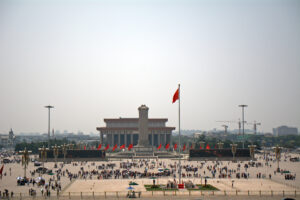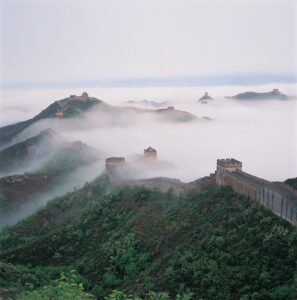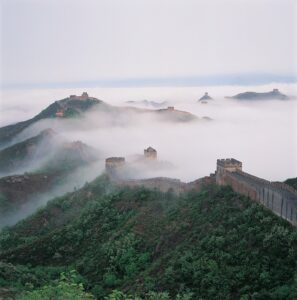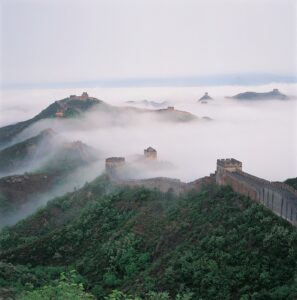
China in Transition, Part 1: Something We Haven’t Done Before
Whenever I talk about China, I want to remind us that China is a big country. After two thousand years of imperial leadership, we are transitioning into something we haven’t done before.

Whenever I talk about China, I want to remind us that China is a big country. After two thousand years of imperial leadership, we are transitioning into something we haven’t done before.

Today we must note that here there wasn’t an emphasis on the individual’s calling; rather, God’s call was to all twelve tribes of Israel, Ephraim, Manessah, Beersheba, etc. All must return. Whether you are in a mainstream denomination or not, all are called to enter his sanctuary together. You must notice that here there is not a most important tribe.

But there are some truths that are viewed differently in different churches. For example, when did the kingdom come? Pre-millennium, post-millennium, or it hasn’t come yet? Another example – should baptism be conducted by sprinkling water or full immersion?

In the end one fact remains: we are united together in one body, in one Spirit, in one hope, in one Lord, one faith, one baptism, with one God. Understanding this in principle is not actually hard – but in practice, what do we do? Today, this is the church’s challenge.

The hope [of Passover] is not only for Judah, but also for Israel. Their discussion about what to do dragged on for one month. So we notice that the leader and his people all think the plan seemed right – truth and unity is not in conflict here.

Before [going to the conference] I was content with my life in Boston. I felt it was enough to focus on my home church, until my friend came and informed me of a much greater “battle” that is going on. And so, I joined the “fellowship of Grace to City,” not expecting much. By the end of the trip, my perspective had changed.

The gospel of “grace alone” brings church leaders to think hard about true grace: Jesus Christ has accepted who we are, even while we were sinning against him. We do not need to earn our salvation; we do not need to earn our sanctification. We already have them in Christ. For church leaders, this is the source of power to imitate our Lord and serve the local church. Change in the lives of leaders brings about change in local churches. The culture of “saving face” can be replaced by the culture of grace. All fake dragons are exposed by the light of the gospel, and the Real Dragon, Jesus Christ, reigns in the ancient land of the dragon. He will set his people free!

We have few works originating from Chinese church leaders. There are some possible reasons – persecution, lack of a reading culture, busy ministry, low education, etc. Yet we can see an enormous benefit from the pastors who wrote during the Reformation. We know about the Reformers through their numerous writings.

In one sense, the history of the church of Christ in China is only about two hundred years, but in a spiritual sense our history can be traced back to the history of the New and Old Testaments. The Chinese church should receive the blessings of the Holy Spirit in history, not start over as a completely new reformation. We can build on the great Reformation of the 16th century. The Reformed confessions are the common heritage of the whole church among all nations, including the Chinese church.

From my personal experience and reflection, and as someone who grew up amidst the generation of Christians under severe persecution in the 1960s and 1970s, yesterday’s recounting of the Chinese house church’s spiritual heritage is a good summary. It provides a window to peek into the differences between one group of the current generation of Christian leaders, represented by yesterday’s author, and the older generation. Because this account does not only describe the spiritual legacy, but also gives a respectful critique, its aim is to be reflective and pedagogical.
Shenyang is a city located in northeastern China and is the capital of Liaoning Province. It is known for its rich history and cultural heritage, including the Shenyang Imperial Palace, which is a UNESCO World Heritage site. Shenyang is also a hub for China’s heavy industry, with companies such as the China First Automobile Group and the Shenyang Aircraft Corporation having their headquarters in the city.
Qingdao is a city located in eastern China and is famous for its beaches, beer, and seafood. The city is home to several landmarks, including the Zhanqiao Pier and the Badaguan Scenic Area. Qingdao is also a major port and has a thriving economy, with industries such as electronics, petrochemicals, and machinery.
Xiamen is a city located in southeastern China and is a popular tourist destination known for its beautiful coastal scenery, including Gulangyu Island, which is a UNESCO World Heritage site. The city is also a hub for China’s high-tech industry, with companies such as Huawei and ZTE having research and development centers in Xiamen.
Chongqing is a city located in southwestern China and is a major economic center in the region. The city is known for its spicy cuisine, especially its hot pot dishes, and is also famous for the Three Gorges Dam, the world’s largest hydroelectric dam. Chongqing is also home to several historic sites, including the Dazu Rock Carvings, which are UNESCO World Heritage sites.
Nanjing is a city located in eastern China and is the capital of Jiangsu Province. It is one of China’s ancient capitals and has a rich cultural history, including the Ming Xiaoling Mausoleum, the Nanjing City Wall, and the Confucius Temple. Nanjing is also a modern city with a thriving economy and is home to several universities, including Nanjing University and Southeast University.
Changchun is a city located in northeastern China and is the capital of Jilin Province. It is known for its rich cultural heritage and is home to several historical landmarks such as the Puppet Emperor’s Palace and the Jingyuetan National Forest Park. Changchun is also a hub for China’s automotive industry, with several major automobile manufacturers having their headquarters in the city.
Guangzhou, also known as Canton, is a city located in southern China and is the capital of Guangdong Province. It is one of the country’s largest and most prosperous cities, serving as a major transportation and trading hub for the region. Guangzhou is renowned for its modern architecture, including the Canton Tower and the Guangzhou Opera House, as well as its Cantonese cuisine, which is famous for its variety and bold flavors. The city also has a rich history, with landmarks such as the Chen Clan Ancestral Hall, the Sun Yat-sen Memorial Hall, and the Temple of the Six Banyan Trees. Additionally, Guangzhou hosts the annual Canton Fair, the largest trade fair in China.
Kunming is a city located in southwest China and is the capital of Yunnan Province. Known as the “City of Eternal Spring” for its mild climate, Kunming is a popular tourist destination due to its natural beauty and cultural diversity. The city is home to several scenic spots, including the UNESCO World Heritage Site of the Stone Forest, Dian Lake, and the Western Hills. Kunming is also famous for its unique cuisine, which features a mix of Han, Yi, and Bai ethnic flavors. The city has a rich cultural history, with ancient temples and shrines like the Yuantong Temple and the Golden Temple, and it’s also a hub for Yunnan’s ethnic minority cultures, such as the Yi and Bai peoples.
Shenzhen is a city located in southeastern China and is one of the country’s fastest-growing metropolises. The city is renowned for its thriving tech industry, with companies such as Huawei, Tencent, and DJI having their headquarters in Shenzhen. The city also has a vibrant cultural scene, with numerous museums, art galleries, and parks. Shenzhen is also known for its modern architecture, such as the Ping An Finance Center and the Shenzhen Bay Sports Center. Despite its modernization, Shenzhen also has a rich history and cultural heritage, with landmarks such as the Dapeng Fortress and the Chiwan Tin Hau Temple.
Chengdu is a city located in the southwestern region of China, and the capital of Sichuan province. It has a population of over 18 million people, and it is famous for its spicy Sichuan cuisine, laid-back lifestyle, and its cute and cuddly residents – the giant pandas. Chengdu is home to the Chengdu Research Base of Giant Panda Breeding, where visitors can observe these adorable creatures in their natural habitat. The city also boasts a rich cultural heritage, with numerous temples, museums, and historical sites scattered throughout its boundaries. Chengdu is a city of contrasts, with ancient traditions coexisting alongside modern developments, making it an intriguing and fascinating destination for visitors to China.
Beijing is the capital city of China and one of the most populous cities in the world, with a population of over 21 million people. The city has a rich history that spans over 3,000 years, and it has served as the capital of various dynasties throughout China’s history. Beijing is home to some of the most iconic landmarks in China, including the Great Wall, the Forbidden City, and the Temple of Heaven. The city is also a hub for political, cultural, and educational activities, with numerous universities and research institutions located within its boundaries. Beijing is renowned for its traditional architecture, rich cuisine, and vibrant cultural scene, making it a must-visit destination for travelers to China.
Shanghai is a vibrant and dynamic city located on the eastern coast of China. It is the largest city in China and one of the most populous cities in the world, with a population of over 24 million people. Shanghai is a global financial hub and a major center for international trade, with a rich history and culture that spans over 1,000 years. The city is famous for its iconic skyline, which features towering skyscrapers such as the Oriental Pearl Tower and the Shanghai Tower. Shanghai is also home to a diverse culinary scene, world-class museums and art galleries, and numerous shopping districts. It is a city that is constantly evolving and reinventing itself, making it a fascinating destination for visitors from around the world.